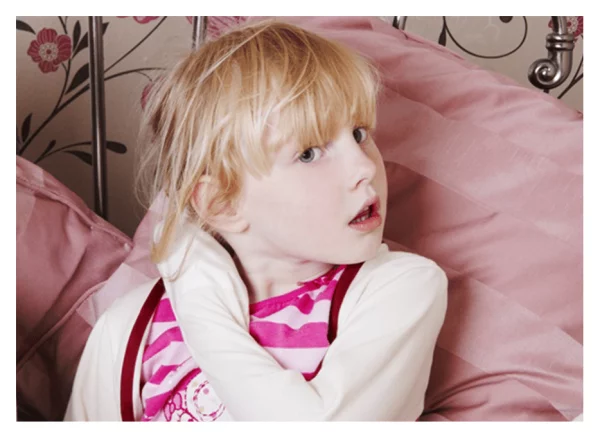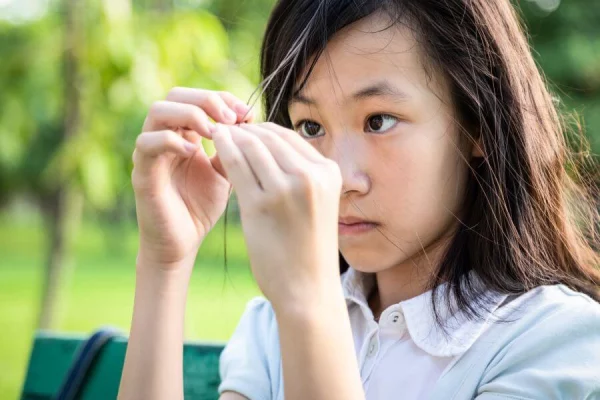If you notice that your child is pulling out their own hair, eyelashes, or eyebrows, don’t worry right away. This is a common issue among children and may simply be part of their normal development. However, this behavior could also be a sign of deeper emotional issues that require your attention. This article will help you better understand the causes and how to handle this situation effectively.
In many cases, hair-pulling behavior can be a natural response when a child feels bored or stressed. According to research from Trich.org, “children sometimes pull their hair when feeling anxious or facing stressful situations in their lives, such as changes in their learning environment or family dynamics.” This behavior may naturally subside as the child goes through the stressful period or environmental changes.

However, if this behavior persists or if you notice your child showing signs of bald patches or scalp issues, that’s when you need to pay closer attention. According to experts from the World Health Organization (2021), “If the child continues this behavior, it may lead to trichotillomania, a condition that causes the child to compulsively pull their hair.” This condition requires immediate treatment to avoid serious psychological and health consequences for the child.
To support the child, parents can apply measures such as gentle conversations, helping the child recognize their emotions and learn how to cope with them, instead of using hair-pulling as a way to release tension. One effective treatment is cognitive behavioral therapy. According to a study by the American Psychological Research Institute (2022), “Cognitive behavioral therapy has been shown to help children identify and replace hair-pulling behavior with healthier actions.” Applying this therapy helps children learn how to cope with emotions without resorting to hair-pulling.
“Hair-pulling is not a conscious choice made by the child; it is a natural response to stress. Helping the child recognize and replace this behavior can help them overcome it more quickly.” – American Psychological Research Institute, 2022.

When a child exhibits hair-pulling behavior, it’s important not to criticize or feel angry. Instead, you should support the child by helping them find safer ways to release their emotions. Experts encourage parents to provide the child with alternative items, such as stuffed animals or soft toys, which can help the child feel gentle sensations and relax.
“Rather than punishing the child, helping them recognize and find alternative methods will make it easier for them to overcome this behavior.” – American Psychological Association, 2020.
Certainly, when children are exposed to appropriate treatment methods, hair-pulling behavior can be controlled and minimized. With patience and support from parents, children can learn how to cope with stress without relying on hair-pulling actions.


HPX24h > Parenting Tips > My Child Is Pulling Out Her Hair: How Should I Handle This?
Top Reads from This Category
Parenting Tips
How to Stop Preschoolers from Putting Everything in Their Mouth?
Parenting Tips
How to Talk to Your Child About Divorce: Helpful Tips for Parents
Parenting Tips
How to Talk to Your Child About Drugs Effectively
Parenting Tips
Tips for Helping Preschoolers Develop Healthy Sleep Habits
Parenting Tips
How to Prevent a 2-Year-Old from Throwing Things?
Parenting Tips
Causes and Solutions for Aggressive and Strong-Willed Behavior in Children
Parenting Tips
Fun Facts for 3-Year-Olds: Exploring the World of Animals and New Foods
Discover New Topics
Parenting Tips
My Child Is Pulling Out Her Hair: How Should I Handle This?
Health
What Is Epigastric Pain and What Causes It
Science
Extinct Black Rhinos Could Make a Comeback with Genetic Technology
Parenting Tips
How to Talk to Children About Poverty and Homelessness (Ages 5-8)
Science
Mind-Controlled Prosthetics: A Groundbreaking Advancement in Medicine
Science
Modular Prosthetic Limb Technology: Breakthrough Discovery Enhances Motion for Disabled Individuals
Science
The Mystery of the Brain Network that Regulates Human Attention Has Been Unveiled
Science
New Discovery: How the Brain Manages Emotions and Memory
Healthy Eating
MIND Diet – The Secret to Protecting the Brain and Preventing Cognitive Decline
Healthy Eating
How to Follow the 5:2 Diet: The Key to Effective Weight Management
Animals
Can Maggots Heal Wounds Faster Than Surgery?
Science
Successful Penis Transplant Surgery: A New Breakthrough in Medical Science
Space
Scientists Discover Dark Galaxy Located 10 Billion Light-Years from Earth